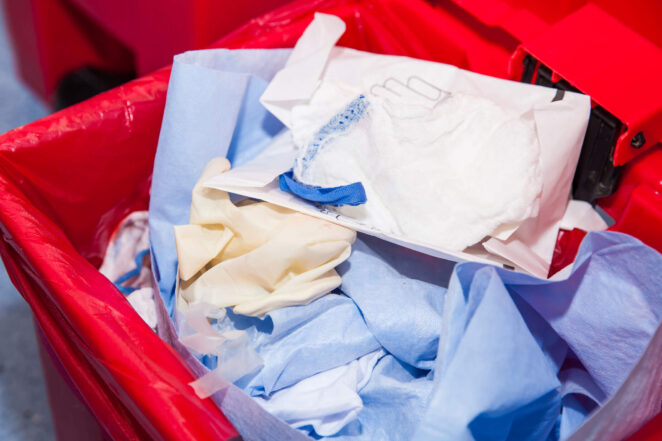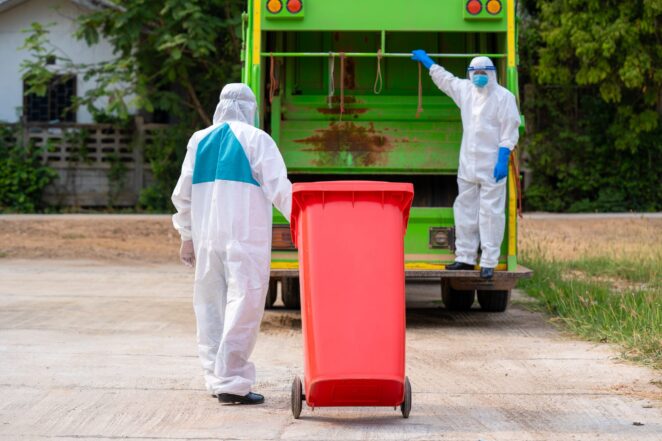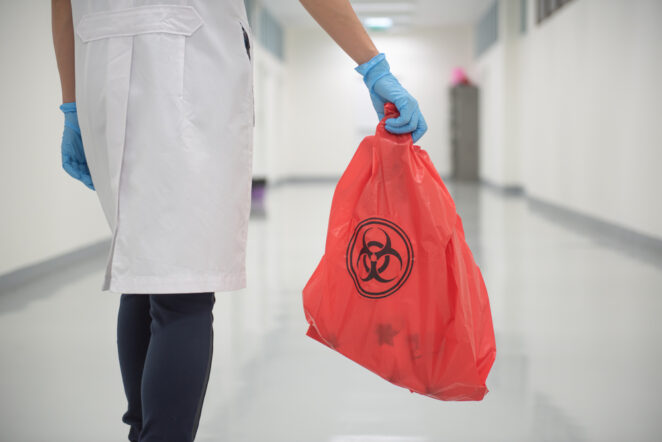Are you running a health-related business and want to help the environment? Then, you’re in for a treat! In this blog post, I’m going to show you how to create a better waste management plan that is both eco-friendly and cost-effective. Let’s get started on creating an effective plan that can help your business reduce its environmental impact while saving money!
Identifying Waste Streams

Creating a successful medical waste management plan for your healthcare business starts with understanding the waste streams produced. Knowing what each one is, where it comes from, and how it can be recycled or disposed of properly is the key to creating a reliable and sustainable waste management plan.
The following are some common waste streams produced in health facilities:
- Medical Waste: It includes items used in patient care and treatments that may contain hazardous materials or elements, such as sharps (needles, syringes), lab cultures/stocks, biological fluids, pharmaceuticals, and chemotherapy drugs. This type must be disposed of according to strict legal regulations to avoid potential health risks.
- Recyclable Materials: Recyclables are items that can be recycled or reused. Common examples include paper products (magazines, newspapers), glass bottles and jars, metals cans and plastic containers. Sending these items for recycling ensures they don’t end up in landfills.
- Hazardous Waste: It is any material that might cause harm to human health or the environment if not handled properly. Examples of this include solvents, chemicals from laboratories and medical supplies used for patient care. Improper disposal of hazardous materials can lead to serious environmental contamination if not handled properly according to federal law.
- Organic Matter: Organic matter includes food scraps, yard trimmings, ashes, soiled paper products (paper towels) and water used during cleaning processes or handwashing activities. This type of waste can be composted or sent for anaerobic digestion to recover energy from the organics matter.
Establishing Waste Reduction Goals

The first step in creating a successful plan for your health care business is to establish realistic and measurable goals. Their goals should be broken down into specific target areas, such as reducing the amount of packaging used in products or increasing the efforts taken to recycle existing resources. Consider partnering with local businesses or organizations that have experience in meeting these goals to make sure that you are taking appropriate steps towards waste reduction.
These goals should be communicated throughout your organization and monitored regularly to help ensure that employees remain informed and motivated. Regularly scheduled meetings can provide an opportunity for progress updates and feedback from staff so that the waste management plan is effective and aligned with the overall mission of the business. Additionally, incentives such as employee recognition for reaching targets or rewards for creative solutions could help increase employee engagement in order achieve greater success in reducing health care waste.
Implementing Waste Management Strategies

Developing an effective waste management plan is essential for any health business. Implementing a comprehensive waste management system is a key component in reducing health and environmental risks, as well as improving the business’s profitability and reputation. To create an effective system, consider the following strategies:
- Develop a Waste Hierarchy: It is the preferred order of how to manage different types of waste materials. Starting from the top of the hierarchy, priority should be given to prevention, reuse, recycling and composting before disposal.
- Establish Collection Systems: All establishments should have systems in place to collect wastes generated within the premises. The best approach depends on the type of wastes being managed and there are several systems available including manual collection bins, containers and recycling systems that separate different kinds of material into specific areas or receptacles for easier handling.
- Develop Transport Protocols: Develop protocols stating on-site transportation policies such as labeling containers when appropriate, designated routes through transport corridors, protections against spills while transporting or off-site storage areas used to store waste materials pending removal by licensed haulers or operators.
- Dispose Responsibly: If there’s no other alternative for your wastes but disposal, dispose them responsibly in either approved landfills or through incineration with proper filtration processes employed to minimize air pollution risks from hazardous emissions associated with burning certain substances such as plastics and electronic wastes (e-wastes).
- Monitor Effectively: Establish procedures for documenting all transactions relating to waste handling activities to ensure regulatory compliance and data gather information about what works so that improvements can be made over time if necessary.
Monitoring and Evaluating the Plan

Once your plan is in place, it will need to be monitored and regularly evaluated to determine its effectiveness. The purpose of monitoring and evaluating the plan is to identify any areas that are not achieving the desired outcomes, determine what changes need to be made, and decide which strategies should be implemented. It can also help identify cost efficiencies.
Monitoring and assessing it involves measuring how well each component of the plan is working. This typically involves collecting data on waste generation, handling and disposal in order to make necessary adjustments for continuous improvement. Data could include things such as kilogram weight of material disposed of per month or number of hazardous materials disposed of correctly through approved vendors for example. A good way to ensure compliant record keeping is to invest in reliable software designed specifically for tracking waste data over time.
It is important to review your plan at least on an annual basis in order to assess if it needs amending or updating – especially if there have been changes in personnel or the type of services provided by your facility. Once the review has been undertaken any suggestions for improvement can be incorporated into an updated version of the plan before it is re-implemented throughout the business.
Conclusion
In conclusion, creating a better plan for your health business requires knowledge and understanding of local Authorities requirements and regulations. It is important to consider all the elements that relate to your business activities and the environmental impacts, not only materials you dispose of at the end of their useful life. Be sure to involve stakeholders in developing and implementing the plan.




